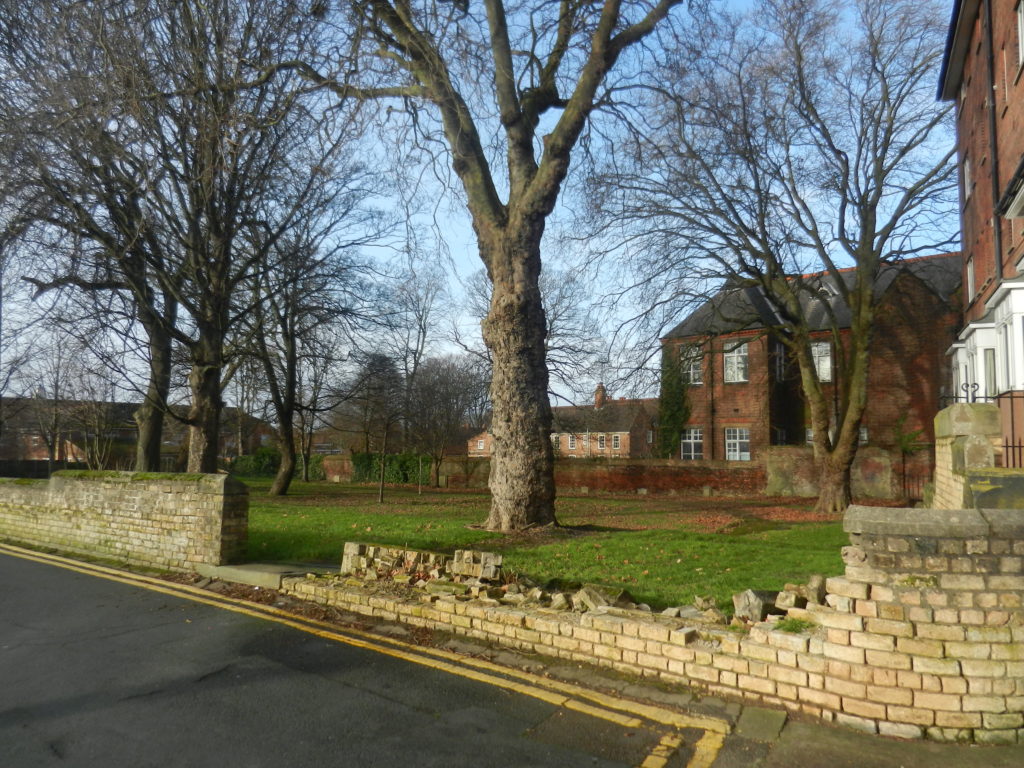
Today’s photo shows a large section of what was once the Trippett detached burial ground for St. Mary’s church, Lowgate. The land here was consecrated in 1775 because already the graveyard around the church itself was so crammed with bodies that it formed a mound beside the street (the original churchyard on Lowgate extended further than the small area we see remaining today, Lowgate then being a very narrow street, whether the graveyard extended further east and south, where buildings now are I am not sure). In 1855 Trippett detached cemetery was closed as it too had become swollen with mortal remains. By 1889 the Municipal Authority had taken over the cemetery site and had turned it into a place of resort with floral displays, benches etc. The initial tasks in creating this ‘pocket park’ (s.p.b.) would have been to lower the mound, build a perimeter wall and lockable entrance and plant trees. Council committee minutes show that by the early 20th century this little park was open to the public every afternoon of the week, including Sundays; and that a member of staff was deployed there to supervise the site.
In 1775 the new detached churchyard stood at the east end of Hull’s developing Georgian suburb with the Charterhouse complex immediately north (see above). Already the New Dock was nearing completion so this area, once open country, was changing fast. Although the site was not far from St. Mary, Lowgate church getting from one to the other would have involved exiting the town through the remnant of North Gate and going round the New Dock.
Certainly in the 14th century the burial and baptismal rights (and income therefrom) had been retained by North Ferriby church – a much longer journey.
to be continued.